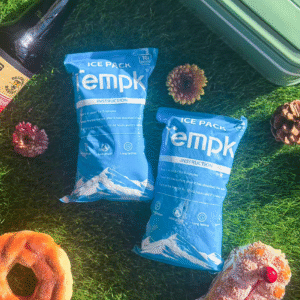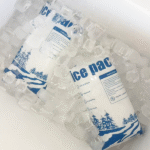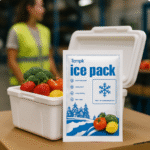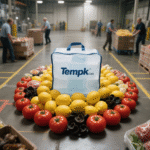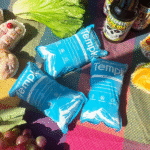Deal Dry Ice Pack Sheet: Wie Sie wählen 2025?
Aktualisiert: Oktober 13, 2025
You want a deal dry ice pack sheet that keeps cargo safe without surprise costs. This guide shows you what the term really means, when it beats gels or true dry ice, how to size it for 24–72-hour lanes, and which 2025 rules matter for air and mail. You’ll get clear math, pack-out patterns, and a vendor scorecard you can use today.
-
What a deal dry ice pack sheet is and when to prefer it over gels or true dry ice
-
So dimensionieren Sie a deal dry ice pack sheet for 24–72-hour lanes with quick math
-
Which pack-out patterns make a deal dry ice pack sheet länger dauern
-
Welche 2025 compliance steps apply if your “deal” is actual solid CO₂
-
How to score suppliers so a deal dry ice pack sheet stays a deal
What is a deal dry ice pack sheet, and when is it better?
Kurze Antwort: Most pages that say “deal dry ice pack sheet” are selling hydratable ice-blanket sheets, nicht solide Co₂. These multi-cell polymer sheets are soaked and frozen; they cool near 0 °C and excel at chilled (2–8 ° C) holds and short frozen lanes. Use them when you want dry, clean wraps and to avoid hazmat steps required for true dry ice.
Sellers lean on this phrase because it ranks well and implies “dry” cooling. In der Praxis, you’re buying hydratable sheets you can cut, wickeln, und wiederverwenden. True dry ice is solid CO₂ at ultra-cold temperatures and needs venting, Markierung, and net-weight labels.
Hydratable sheet vs true dry ice: what changes in performance?
Hydratable sheets stabilize around the freezing point and shine for gekühlt goods, moisture-sensitive labels, and snug 360° wraps. True dry ice holds deep-frozen and ultra-cold bands for long lanes and lab payloads, but it brings hazmat handling. If you need ≤ −20 °C for extended time, dry ice wins; if you need 2–8 °C with easy handling and no hazmat, the sheet is the smarter buy.
| Kühloption | Typical temp band | Heimat? | Was es für Sie bedeutet |
|---|---|---|---|
| Deal dry ice pack sheet (hydratable) | Chilled 2–8 °C; short frozen | NEIN | Clean wraps, flexible fit, Einfache Sops |
| PCM / Gelziegel | 0 °C to −21 °C setpoints | NEIN | Precise setpoints; bulkier than sheets |
| Echtes Trockeneis (UN1845) | ≤ −20 °C; ~−78.5 °C surface | Ja | Lange hält, requires venting and labels |
Praktische Tipps
-
Read clues: “Soak in water” = sheet. „UN1845 / PI 954 / net kg” = true dry ice.
-
Match use case: Choose the sheet for chilled holds, not ultra-cold targets.
-
Pilot first: Laufen 3 lanes with a data logger before standardizing.
Fall: A bakery replaced bulky gel bricks with a deal dry ice pack sheet wrap for 36-hour frozen pastries. With one −21 °C PCM brick, delivery temps stayed −12 °C to −6 °C, complaint rates halved, and coolant cost fell ~15%. No hazmat steps were needed.
How do you size a deal dry ice pack sheet for 24–72-hour lanes?
Start simple: Für gekühlt cargos in EPS shippers, a workable pilot is one 24-cell deal dry ice pack sheet per 2–3 L of internal volume over 24–48 hours, assuming tight pack-outs and pre-conditioning. Für gefroren targets, pair sheets with −10 °C/−21 °C PCM or switch to true dry ice sized by mass. Always multiply route time by 1.2 to buffer last-mile delays.
Build your estimate from payload size, Isolierung, Kopfspace, and weather. EPS or VIP cuts heat load dramatically; cardboard-only forces you to add coolant. Keep headspace ≤ 15%; use dunnage to stop convection. In hot lanes or long doorstep exposure, add 10–30% more sheet capacity. Validate with a data logger across three consecutive shipments before “locking” the SOP.
Deal dry ice pack sheet sizing calculator (and dry-ice math)
| Variable | Typical choice | Warum ist es wichtig | Action for you |
|---|---|---|---|
| Isolierung | EPS oder VIP | Less heat gain | Expect fewer sheets or less dry ice |
| Kopfspace | ≤ 15% | Limits convection | Add kraft/foam dunnage |
| Puffer | × 1.2 Zeit | Accounts for delays | Pad your estimate and test |
Praktische Tipps
-
Pre-condition everything: Freeze sheets to the core; pre-chill shippers.
-
Mind seasonality: Add capacity for hot lanes and porch time.
-
Log early: Use a low-cost data logger during pilots.
Fall: A seafood exporter tuned a deal dry ice pack sheet pack-out for 48-hours by adding 20% more sheet area during summer. Claims dropped while total coolant mass stayed below gel-pack baselines, trimming DIM charges.
Which pack-out makes a deal dry ice pack sheet work longer?
Use a “sandwich” pattern and kill headspace. Place sheets under, um, and on top of the product for uniform surface contact. Halten Nutzlast + coolant ≥ 85% of the shipper’s internal volume, then block remaining voids. If labels hate moisture, pick paper-faced or “no-sweat” sheets to cut condensation without losing performance.
Insulation upgrades pay back fast. VIP panel shippers can cut sheet count or dry-ice mass by 30–70% versus cardboard-only or thin liners. Reflective Mylar liners reduce radiant load and help keep branding dry. If you resize sheets, cut along seams to prevent wicking or splits, and avoid over-soaking beyond ~¾-inch thickness before freezing.
| Pack-out element | Good practice | Typischer Gewinn | What to do next |
|---|---|---|---|
| Kopfspace | ≤ 15% total void | Longer holds | Add kraft/foam dunnage |
| Liner | Mylar or paper-faced | Drier labels | Use for moisture-sensitive cartons |
| Sheet prep | Hydrate to ~¾″; freeze hard | Fewer cell splits | Avoid over-soaking; cut on seams |
Praktische Tipps
-
Block convection: Tight packs outperform cold mass alone.
-
Use EPS/VIP first: Spend on R-value, not just coolant.
-
Choose “no-sweat” faces: Keep labels crisp and scannable.
Fall: An e-grocery pilot swapped two gel bricks for one deal dry ice pack sheet wrap plus reflective liner. Chilled goods stayed inside 2–8 °C and the team removed two tape steps, cutting pack-out time per box by 40 Sekunden.
How do you stay compliant when a “deal dry ice pack sheet” is true dry ice?
If your sheet hydrates, it’s not hazmat. If it’s Solid Co₂, treat it as UN1845: Entlüftung das Paket, mark “Carbon dioxide, solide (Trockeneis),” and list Netz kg pro Hier ist pi 954. Airline passenger limits are 2.5 kg, packages must not be airtight, and the waybill must reflect quantity. USPS domestic airmail caps dry ice to ≤ 5 lb (≈ 2.27 kg) pro Stück; international mail prohibits it.
Ground rules mirror air in spirit: packaging must allow gas release, labels must warn handlers, and operator variations can raise or lower limits. Document your SOP: how you vent, how you record net dry ice, and how you train new packers. If you stick to deal dry ice pack sheet hydratable products, you avoid these hazmat steps entirely.
| Modus | Core rule | What you must do |
|---|---|---|
| Luftfracht (Hier ist pi 954) | Markieren UN1845 Und Netz kg; provide vent path | Print labels, Entlüftung, reflect on waybill |
| Airline passenger | ≤ 2.5 kg per person/package | Seek approval; use non-airtight packaging |
| USPS-Inlandsflug | ≤ 5 lb pro Paket; no international | Allow gas release; folgen 49 CFR marks |
Praktische Tipps
-
Label clearly: „Kohlendioxid, solide (Trockeneis)” + Netz kg.
-
Never seal gas: Venting prevents pressure buildup.
-
Train the line: SOPs reduce acceptance hiccups.
Fall: A lab switched mislabeled “dry ice sheets” (actually hydratable) to true dry ice for −70 °C vials. After adding vented lids and net-kg labels, airline acceptance moved from 70% Zu 100% on first inspection.
How do you evaluate vendors for a deal dry ice pack sheet?
Run a 10-point scorecard and negotiate only after pilots. Look for clear product type (hydration vs UN1845), cell specs (Z.B., 24-cell), Zyklen wiederverwenden, “no-sweat” faces, SDS and pack-out guides, cut-to-fit edges, and normalized thermal tests. Reliable MOQs and lead times matter more than the sticker price on day one.
Modular formats (12/24/48 Zellen) ease right-sizing. Mylar-coated faces reduce condensation. Many vendors discount 20–30% on bulk buys; verify that with documented performance, not just claims. Ask for logger traces under the same shipper, laden, and ambient profile you will use.
| Kriterium | What to look for | Your target |
|---|---|---|
| Product clarity | Hydratable vs UN1845 is explicit | 2 |
| Cell spec & Materialien | 24-cell; Pe + non-woven + SAFT | 2 |
| Reuse guidance | Cycles and limits documented | 2 |
| “No-sweat” option | Paper-faced / laminated | 2 |
| Dokumentation | SDS + pack-out SOPs | 2 |
| Cut-to-fit | Edges resist wicking when cut | 2 |
| Lead time & MOQ | No surprise backorders | 2 |
| Thermal claims | Normalized lane tests | 2 |
| Waste footprint | Recyclable faces / drain-safe gels | 2 |
| Tech support | Helps design lane pilots | 2 |
| Score ≥ 16: proceed; 12–15: pilot first; ≤ 11: expect hidden costs. |
Praktische Tipps
-
Ask for bulk tiers: Confirm 20–30% savings kick in at your volumes.
-
Demand test data: Same shipper, same ambient, same payload.
-
Verify cut-ability: Sheets should cut on seams without leaks.
Fall: A pharma 3PL chose a deal dry ice pack sheet supplier with normalized tests and “no-sweat” faces. Training time dropped, and returns fell despite summer peaks—validating the higher-tier price.
2025 developments and trends in cold-chain cooling
The market keeps growing as e-grocery, frozen D2C, and healthcare lanes expand. Hybrid pack-outs that blend deal dry ice pack sheet wraps with targeted PCM setpoints are rising, while VIP panels push down total coolant mass. Expect more operator focus on healthcare acceptance and reusable systems through 2025.
Was ist neu in 2025
-
Sensor-enabled sheets: IoT add-ons track product temp and CO₂ conditions.
-
Hybrid PCM + Trockeneis: Extends frozen holds with smaller total coolant.
-
Circular materials: Recyclable shells and eco-coatings move mainstream.
Market snapshot: Packaging/logistics show double-digit growth through the early 2030s; cold-chain logistics forecasts hover near ~13% CAGR durch 2032. Frozen foods grow steadily as D2C brands lean on robust last-mile packs.
FAQs
Is a deal dry ice pack sheet the same as real dry ice?
NEIN. It’s a hydratable multi-cell sheet that cools near 0 °C, while true dry ice is solid CO₂ near −78.5 °C and requires hazmat steps.
How many sheets do I need for 48 Std.?
For chilled targets in an EPS shipper, Beginnen Sie mit one 24-cell sheet per 2–3 L of internal volume, then tune by pilot data.
Can I cut the sheets to fit smaller boxes?
Yes—most are modular. Cut along sealed seams to avoid leaks or wicking.
Is it safe for food shipments?
Yes when used indirectly. Choose “no-sweat” or paper-faced sheets for label-sensitive cartons.
Can I fly with a deal dry ice pack sheet?
Hydratable sheets are not hazmat. For true dry ice, passenger limit is 2.5 kg and packaging must vent and be labeled.
Zusammenfassung und Empfehlungen
A deal dry ice pack sheet is ideal for chilled lanes and short frozen holds, avoiding hazmat, cutting labor, and wrapping evenly around products. For ultra-cold or long holds, Größe true dry ice by mass and upgrade insulation. Töte Headspace, pre-condition to the core, and validate with a data logger before scaling SOPs. Use the 10-point scorecard to keep “deals” from becoming surprises.
Nächste Schritte (CTA):
-
Define temp band and hold time; 2) pick EPS/VIP; 3) start with the sheet or dry-ice estimator here; 4) run three pilots and finalize SOPs with training. Talk to Tempk for a lane test kit.
Über Tempk
We design practical cold-chain kits—EPS/VIP shippers, deal dry ice pack sheet bundles, and PCM sets—so you hit temperature without overspending. Our focus is low headspace, fast pack-out, and straightforward SOPs that new teams can follow after one training session. Ask us for samples or a pilot plan for your lane profile.






